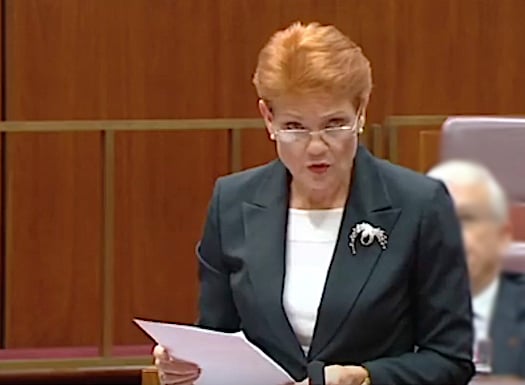At the end of last month two amendments to the Broadcasting Services Act passed the Senate, and now move to the House of Representatives.
Last year, when Media Reform was a hot topic, three Senators raised a number of issues about broadcasting that they wanted addressed in return for their support of changes to broadcasting legislation.
Senators Dastyari and Xenophon wanted a review of the quality of journalism in the new media environment and the influence of the digital giants on traditional media businesses. They got what they wanted with a series of inquiries, which are still in progress, despite the fact that both Senators are now gone from Federal politics.
The third Senator, Pauling Hason, is the only one left and the government is still working to deliver on its promises about issues important to her party. That is why the ABC is in the spotlight for competitive neutrality – a review was initiated because Pauline Hanson raised the issue.
Two other issues are important to Hanson: foreign ownership and community radio.
With her grass roots policy focus it is not surprising that these are priorities: ownership of our media should be of interest to Australians, we want to know who is in control of the news and content we consume daily; and community radio is also vital as one of the three important pillars of Australia’s radio landscape, along with national and commercial radio.
The motivation behind the changes, which are now being shaped into legislation, is well intentioned, but may not be practical enough to pass through the House or Reps without further modificatons.
Foreign Ownership
Schedule 1 of the Amendments will mandate the regulator ACMA to keep a register of foreign owners of media assets and make it compulsory for companies to notify ACMA of ownership changes within 30 days.
The reportable threshold is 2.5%, and this may be the sticking point. In public companies, daily share trades of large institutional share holders may trigger a compulsory notification, only to be changed again a few days later when shares are bought or sold again. Other regulatory bodies, such as ASIC and the stock exchange, also have reportable thresholds for ownership, but they are usually higher, such as 10-15%.
The 2.5% threshold may also be more costly for ACMA to monitor, given that there would likely be many changes to keep track of across each year.
On the other hand, if a group of foreign companies were to collude and buy 2.4% each of a media company, then work together to secretly control it, perhaps the threshold is justified. This is an unlikely scenario, but not unheard of in other countries.
These are the pros and cons that will be debated as the legislation passes through the next steps.
Community Radio
The second amendment seeks to ensure that community radio remains local. In the face of more networking by other sectors, the Hanson amendments want to ensure that the majority of content on community radio is local and that it is taken into account when licences are renewed by ACMA.
It is a logical aim, especially at a time when international and national media is aggregating. The explanatory memorandum for the amendments says:
This part of the legislation wants “material of local significance” to be a big consideration in licence renewals. Material of local significance would be defined as “material that is produced in, hosted in, or relates to, the licence area of the proposed licence” when renewing licences, according to the explanatory memorandum to the Bill.
Any community station that has filled in a licence renewal form knows that the ACMA already has several sections in the form which require evidence of local engagement, so this is unlikely to be a problem for most stations, except those that take a lot of networked programs or do not broadcast enough local news or information.
The wording of the legislation may make it difficult for the ACMA to interpret the intention with enough flexibility for some stations.
The definitions of ‘material of local significance’ are:
(a) it is hosted in the licence area of the proposed licence; or
(b) it is produced in the licence area of the proposed licence; or
(c) it relates to the licence area of the proposed licence.
but the definitions are unclear, and ‘content relating to the licence area’ is also ambiguous.
The intention of the legislation is aimed at making sure the majority of content in local community stations is local, but there are many types of community station, some do serve local geographic communities, but others serve ‘communities of interest’ and carry different types of programming, some of it syndicated.
If the legislation passes the next stage, there is likely to be more work to be done before it can be fully implemented.

